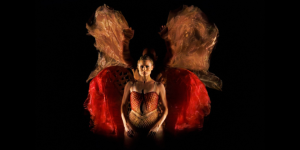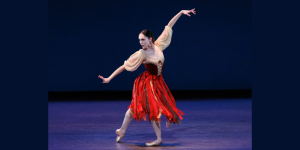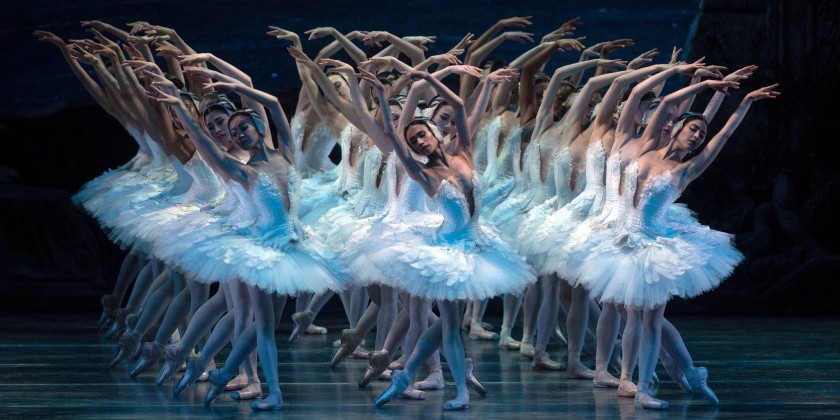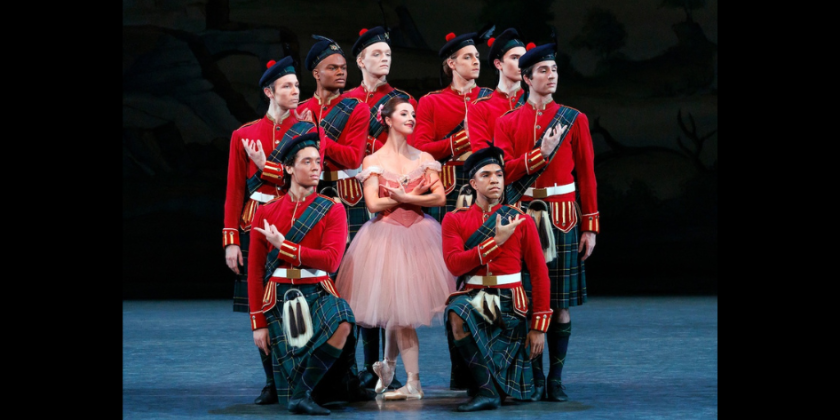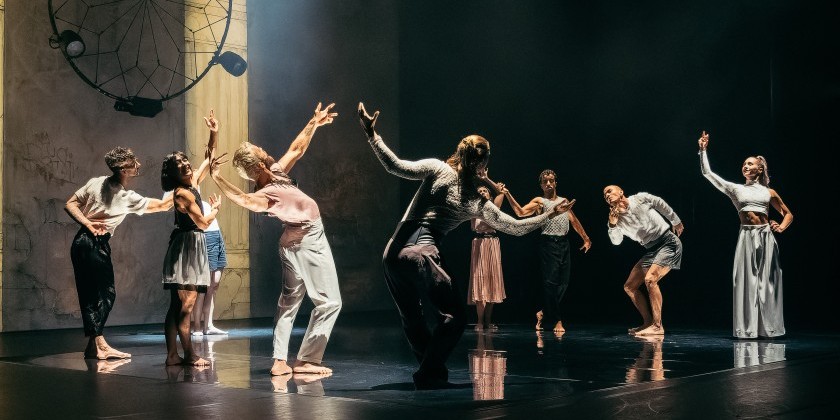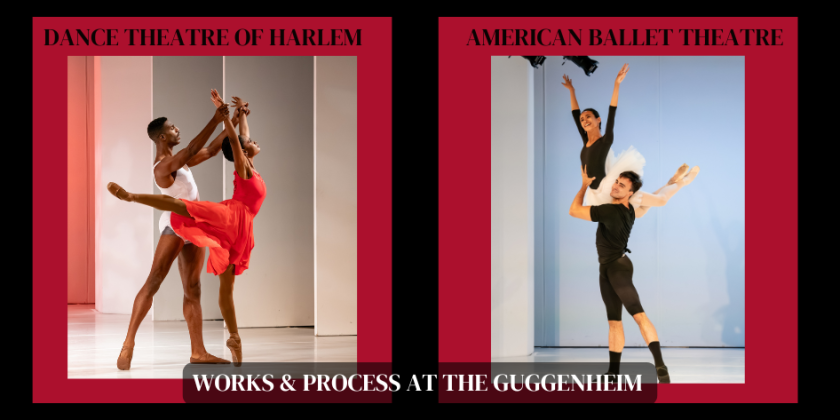IMPRESSIONS: New York City Ballet in "All Balanchine I and II"
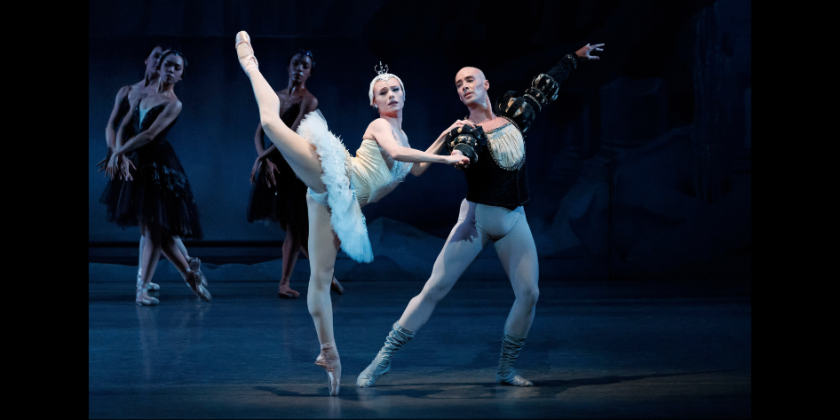
New York City Ballet at David H. Koch Theater, Lincoln Center
All Balanchine 1 & 2
September 16 - October 12, 2025
Program 2: Wednesday, September 17
SQUARE DANCE: M. Fairchild, Huxley [Guest Conductor: Olarte-Hayes]
EPISODES: LaFreniere, Chan, Hod, Knight, *Maxwell, Stanley, Nadon, Danchig-Waring [Guest Conductor: Ritenauer]
WESTERN SYMPHONY: Laracey, *Mabie, Woodward, Sanz, Kikta, Mejia [Guest Conductor: Olarte-Hayes]
Program 1: Thursday, September 18, 7:30PM
Conductor: Litton
DONIZETTI VARIATIONS: Tiler Peck
**Mejia BALLADE: *E. Von Enck, *Mabie [Solo Piano: Kim]
SWAN LAKE: Mearns, T. Angle, *Lundgren, *Corti, Melnikov
*First Time in Role
**NYC Debut
Two programs of mostly second-rate ballets by choreographer George Balanchine open the fall season at New York City Ballet this year. Luckily this master’s lesser work does not appear minor, without major works for comparison.
The jolly Square Dance delights with its frequent changes of focus. The corps de ballet shifts from communal social dance passages to frontal presentation, while the pas de deux sections alternate between intimate partnering and an eager exploration of space. A passage where the ballerina darts through a flock of dancers appears juxtaposed with an introspective male solo. Principal couple Megan Fairchild and Anthony Huxley dance with brio, and happily infect the group. The palpable joy even spreads to the audience. Instead of calling out the steps as is done in a traditional square dance, Huxley introduces a movement sequence by physically demonstrating what the group of dancers then repeat. Fairchild expertly syncopates her quicksilver steps to music by Arcangelo Corelli and Antonio Vivaldi; and Huxley beats his legs in the air with precision and lightness. His lonely reverie in the serene solo convinces just as much.
Olivia Bell, Allegra Inch, Baily Jones, Grace Scheffel, Kylie Takeno Williams, and Mia Williams pair up with Victor Abreu, Spartak Hoxha, Hugo Mestres, Alexander Perone, Cainan Weber, and Andres Zuniga. In the actual square dance sections, I feel like grabbing a partner and joining in. How fun, when a Balanchine ballet celebrates community!
In the original 1957 version of Square Dance, there indeed was a caller to highlight the social dance aspect while musicians played on stage, but for the 1976 revival at Lincoln Center, Balanchine eliminated the caller and put the orchestra in the pit. He also added the male solo for Bart Cook. Did Balanchine think the folk-dance element unfit for the time and place?
Led by two guest conductors, Nico Olarte — Hayes and Kyle Ritenauer, the program on Wednesday follows the A-B-A musical form, sandwiching an arty work between two more ingratiating and easily accessible pieces.

Episodes, with music from orchestral works by Anton Webern, certainly is not light fare, and might be Balanchine’s most cerebral response to any music. Webern’s musical aphorisms don’t give the dancers much room to play, and most of the dancers appear lost executing movements that seem empty and vapid. Movement theorist Rudolf von Laban would have a field day instilling the fundamental values of weight, space, time, and flow. Isabella LaFreniere and Chun Wai Chan, who lead the opening Symphony, Opus 21, are unquestionably extremely capable dancers, but there simply is no rhyme or reason to anything they enact in their passage. Beautiful Ashley Hod and handsome Alec Knight don’t fair any better in the ensuing Five Pieces, Opus 10.
In stark contrast, Alexa Maxwell and Taylor Stanley give a master class of how weighted gesture and a shift between quick and sustained timing can infuse each step and movement with purpose. Their finely tuned Concerto, Opus 24 has me spellbound. Stanley stops Maxwell’s off-center turn with one perfectly placed hand on her ankle. Their unity and understanding allows for a moment of complete stillness without reverberation in her body. It’s breathtaking.
Mira Nadon and Adrian Danchig-Waring bring star presence to the closing Ricercata…, but I admit that I am unable to switch gears in time to give them my full attention, so taken am I by Maxwell’s and Stanley’s artistry. Could the 1959 Episodes succeed if every section were danced so thoughtfully?
.jpg)
Western Symphony ropes the audience back into Americana. Early in the season, the dancers eagerly take on the kitschy fun, and they look at home in the colorful Karinska costumes. Apparently, Balanchine learned how to build traditional square dance elements into his dances in 1954 — three years before Square Dance premiered. Ashley Laracey and Jules Mabie blaze through the opening Allegro. Indiana Woodward and Aarón Sanz relish the Adagio; and Emily Kikta and Roman Mejia explode in Rondo, before Mary Elizabeth Sell and Devin Alberda (the would-be lead couple from an omitted section) join in the lively finale. Does the curtain come down too early, or do I blink an eye and miss the flying cowboy hats? A recent review of mine goes into more detail about the work.
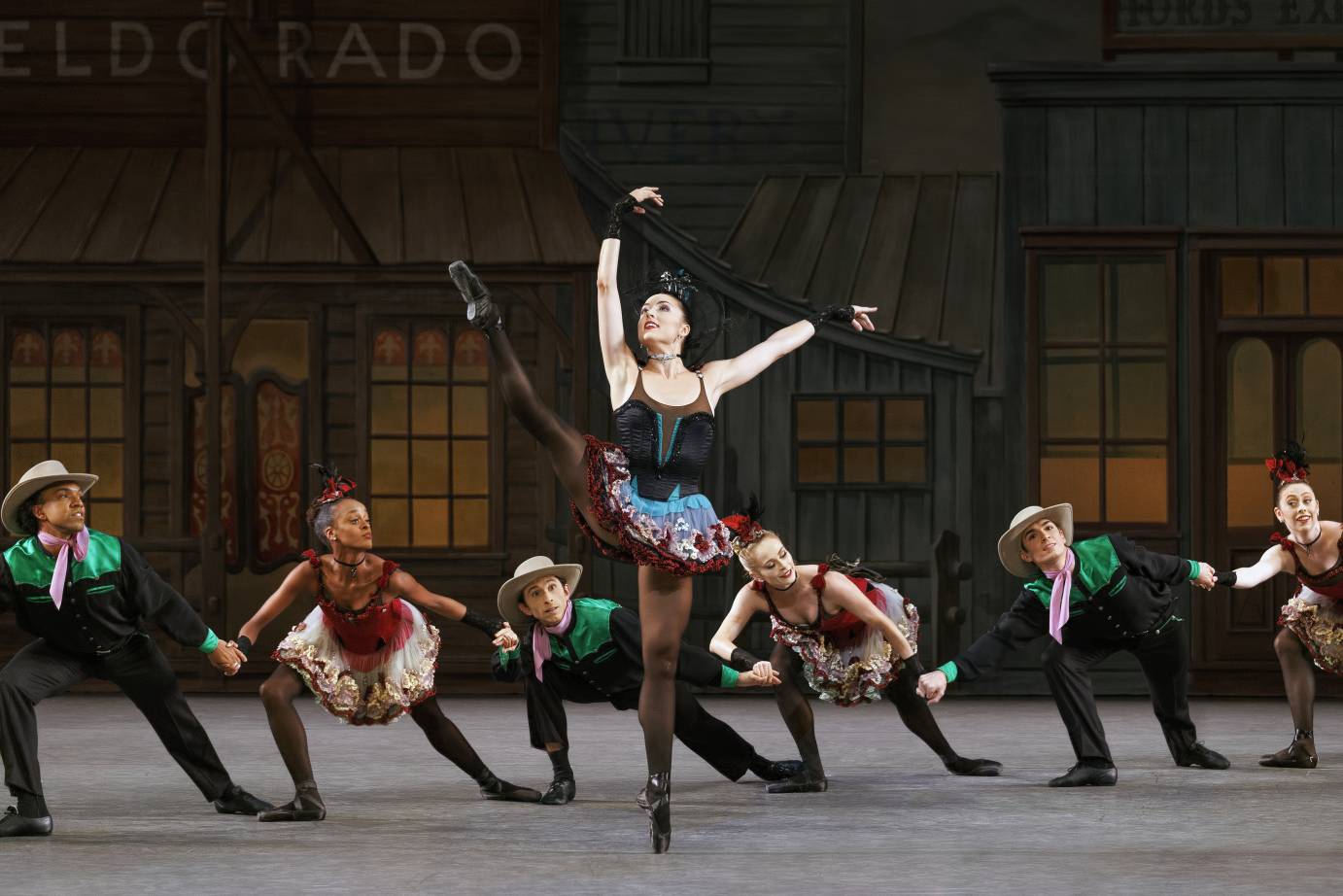
On Thursday, under the baton of music director Andrew Litton, Tiler Peck and Roman Mejia transform Donizetti Variations into a Broadway showcase. These two still newly-weds show that they have plenty to smile about; but while I delight in their prowess, I quickly tire of their glee. Color me jealous.
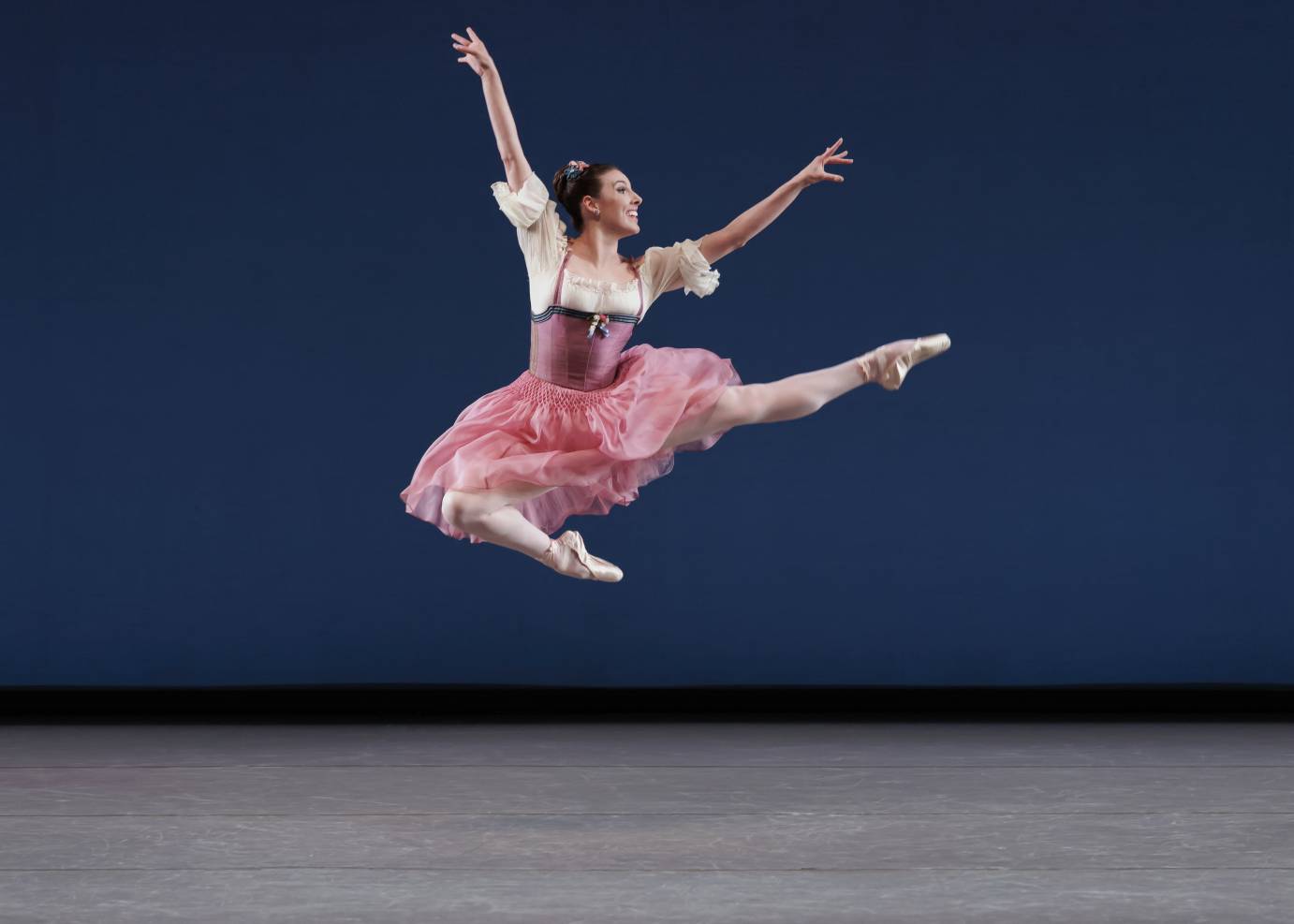
The dancers waft about in Ballade, once a showcase for the more lyrical side of the brilliant ballerina Merrill Ashley. Balanchine, created this ballet in 1980, set to Gabriel Fauré’s Ballade for piano and orchestra, Op. 19, now played by pianist Hanna Hyunjung Kim. Emma von Enck and Jules Mabie bring youthful romanticism to their meeting. When he leaves, she flutters, turns, and departs enlightened by his sweetness.

Balanchine’s abridged one-act version of PyotrIlyich Tchaikovsky's Swan Lake does not take flight on Thursday evening. Tyler Angle partners Sara Mearns flawlessly, but she looks as if something is troubling her. Since she is known and beloved for her expansiveness, I am concerned that she may have hurt her back. The movement in her torso is so tight and regimented. A seasoned professional, she gets through the ballet without any mishap, and valiant Angle is to be applauded for anticipating her every move, offering stalwart and elegant support. When Mearns is transformed back into a swan, and Angle watches the white prop bird glide away across the stage, one feels relief.






